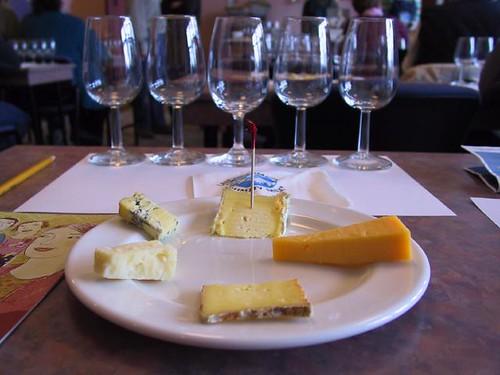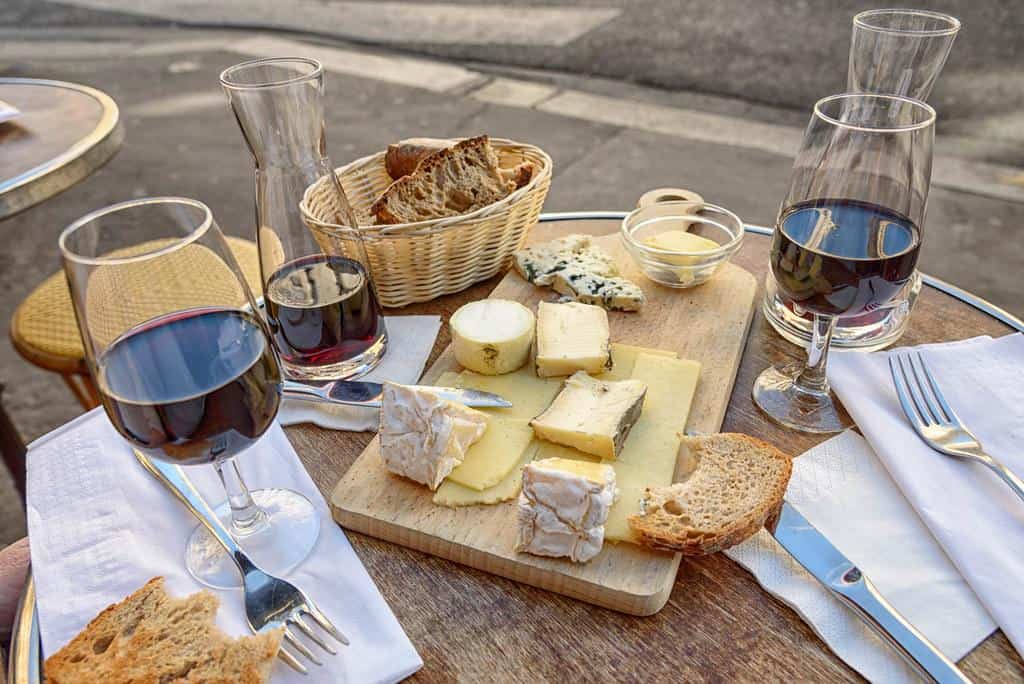Few things are as enjoyable as a great pairing of cheese and wine. When done right, the combination can elevate the flavors of both the cheese and the wine, creating a delicious experience for the palate. However, pairing cheese and wine can be intimidating, as there are so many types of cheese and wine to choose from, and not all pairings work well together. In this guide, we will explore the basics of pairing cheese and wine and provide tips to help you create the perfect pairing.
The Basics of Pairing Cheese and Wine

Before we dive into the details of pairing cheese and wine, let’s go over some basic principles. First, when pairing cheese and wine, you want to create a balance between the flavors of the cheese and the wine. You don’t want one to overpower the other. Second, you want to consider the intensity of both the cheese and the wine. Generally, light-bodied wines pair well with light cheeses, while full-bodied wines pair well with stronger, more robust cheeses.
Another important factor to consider is the acidity of the wine. Wines with high acidity can cut through the fat in cheese, which is why they pair well with creamy, rich cheeses. Conversely, low-acid wines may be overpowered by strong, pungent cheeses.
With these basic principles in mind, let’s take a look at some specific cheese and wine pairings.
Pairing Cheese and White Wine
When it comes to pairing cheese and white wine, there are a few things to keep in mind. First, white wines tend to be lighter in body than red wines, so they pair well with lighter cheeses. Here are a few cheese and white wine pairings to try:
- Fresh Cheeses: Fresh cheeses like mozzarella, ricotta, and goat cheese pair well with crisp, acidic white wines like Sauvignon Blanc and Pinot Grigio. The acidity in the wine cuts through the creaminess of the cheese and balances out the flavors.
- Soft Cheeses: Soft, creamy cheeses like Brie and Camembert pair well with fuller-bodied white wines like Chardonnay. The richness of the cheese is complemented by the depth of flavor in the wine.
- Hard Cheeses: Hard cheeses like Parmesan and Pecorino Romano pair well with dry white wines like Pinot Grigio and Chardonnay. The saltiness of the cheese is balanced by the acidity in the wine.
Pairing Cheese and Red Wine
Pairing cheese and red wine can be a bit trickier than pairing cheese and white wine. Red wines tend to be more full-bodied and tannic than white wines, so they pair well with stronger, more robust cheeses. Here are a few cheese and red wine pairings to try:
- Aged Cheeses: Aged cheeses like Cheddar and Gouda pair well with full-bodied red wines like Cabernet Sauvignon and Merlot. The intensity of the cheese is matched by the depth of flavor in the wine.
- Blue Cheeses: Blue cheeses like Roquefort and Gorgonzola pair well with sweet, fruity red wines like Port and Zinfandel. The sweetness in the wine balances out the sharpness of the cheese.
- Hard Cheeses: Hard, nutty cheeses like Manchego and Parmigiano-Reggiano pair well with medium-bodied red wines like Sangiovese and Pinot Noir. The nuttiness of the cheese is complemented by the fruitiness of the wine.
Pairing Cheese and Sparkling Wine
Sparkling wine is a versatile wine that can be paired with a variety of cheeses. Here are a few cheese and sparkling wine pairings to try:
- Soft Cheeses: Soft, creamy cheeses like Brie and Camembert pair well with sparkling wines like Champagne and Prosecco. The effervescence of the wine helps cut through the creaminess of the cheese and balances out the flavors.
- Hard Cheeses: Hard, salty cheeses like Parmesan and Pecorino Romano pair well with dry sparkling wines like Brut. The acidity in the wine balances out the saltiness of the cheese.
Tips for Pairing Cheese and Wine
Now that you have a better understanding of the basics of cheese and wine pairing, here are a few tips to help you create the perfect pairing:
- Experiment: Don’t be afraid to try different combinations of cheese and wine. You never know what you might discover!
- Start with one type of cheese: When you’re just starting out, it can be overwhelming to try to pair multiple types of cheese with multiple types of wine. Start by pairing one type of cheese with one type of wine, and then build from there.
- Consider the occasion: The pairing you choose may vary depending on the occasion. For example, if you’re having a casual get-together with friends, you may want to choose a more affordable pairing, while a special occasion may call for a more expensive pairing.
- Serve at the right temperature: Cheese and wine should be served at the appropriate temperature to bring out their flavors. Soft, creamy cheeses are best served at room temperature, while hard, aged cheeses are best served slightly cooler. White wines should be served chilled, while red wines should be served at room temperature.
- Don’t forget the accompaniments: Cheese and wine pair well with a variety of accompaniments, such as crackers, bread, fruit, and nuts. Consider adding some complementary accompaniments to your cheese and wine pairing to enhance the overall experience.
Pairing cheese and wine can be a delicious and enjoyable experience when done right. By considering the principles of balance, intensity, and acidity, and experimenting with different combinations, you can create the perfect pairing for any occasion.
Keywords: Cheese, Wine, Pairing, White Wine, Red Wine, Sparkling Wine, Accompaniments, pairing cheese and wine, tips for pairing cheese and wine, steps for pairing cheese and wine, how to guide for pairing cheese and wine, pairing cheese and wine for a party
Check out our Novel Writing Workbooks
Check out Little Tree Food Forest for articles on food forests and homesteading.
Check out FoodieScapes for articles on growing, fermenting and preserving food
Check out StoryScapes.World for articles on writing.
Subscribe to our newsletter to get information delivered to your inbox on homesteading, growing food, food preparation, travel, fishing, and more.











